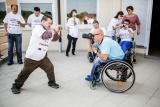Resources for Research Center

2021 Dart Awards: Reporting Tips from the Honorees
On September 30th, the 2021 Dart Awards honorees joined us for three roundtable conversations to discuss their craft, and approach to writing and reporting complex stories.

How Can Indigenous Reporters Care for Themselves While Covering Trauma — and How Can Their Newsrooms Help?
In the last months, the remains of over a thousand people, including at least hundreds of Indigenous children, have been discovered on the properties of former residential schools in British Columbia and Saskatchewan. These discoveries have brought to the fore — for now — a subject that has long remained at the margins of mainstream media coverage in the United States: the genocide of millions of Indigenous people by colonizers.

Dart Center Style Guide for Trauma-Informed Journalism
This Dart Center style guide is designed as a quick, authoritative reference for reporters, editors and producers working on tight deadlines. It includes brief evidence-informed guidance on news choices, language usage and ethics in reporting on the impact of trauma on individuals, families and communities; recommendations for appropriate use of relevant psychological and scientific terminology; and special considerations when reporting on consequential trauma-laden issues such as racism and sexual violence.
Children: coverage, images and interviews
How should we handle reporting about children who are accused of committing crimes? What about children who are the victims of crimes, or witnesses to crimes? This resource from ONA Ethics offers some useful guidance.

Guidelines for journalists reporting on children
Media reporting on children and young people should never put them at risk. UNICEF has developed principles and guidelines to help journalists report on children’s issues in a way that enables them to serve the public interest without compromising the rights of children.

Conducting Interviews with Kids: Do’s and Don'ts
This article from the Columbia Journalism Review outlines some best practices that education reporters keep in mind when interviewing children.
Methodological Sampling Considerations for Researchers Studying Journalists and Trauma
Which journalists should be studied? Under what conditions? Which research questions are well-settled, and what demands further study?
You Can Help! Women Journalists and Online Harassment
The Dart Center is working with researchers at The University of Tulsa to better understand women journalists’ experience with online harassment in the United States.
Journalism Occupational Behavioral Checklist
Designed for researchers familiar with basic psychometrics, this document aims to explain how to evaluate and use the Journalism Occupational Behavioral Checklist (JOB-CL) in research studies.